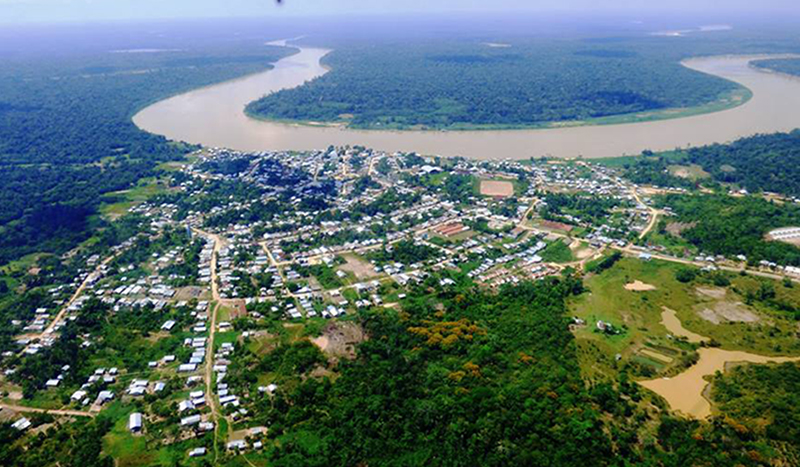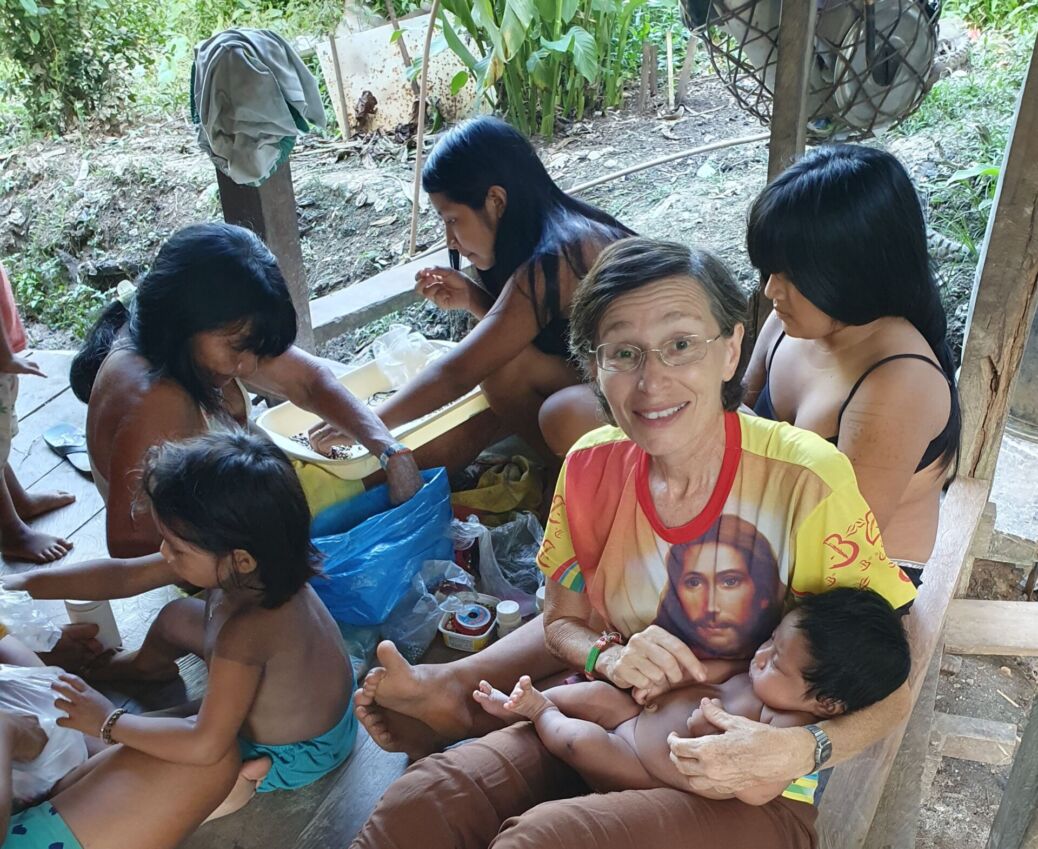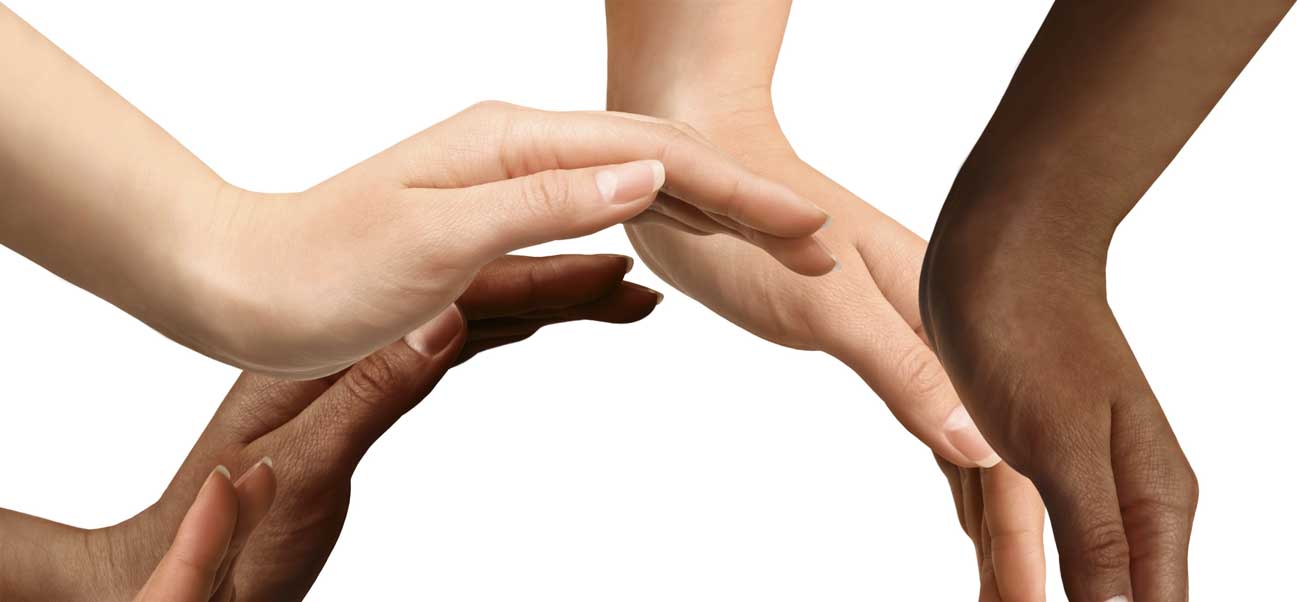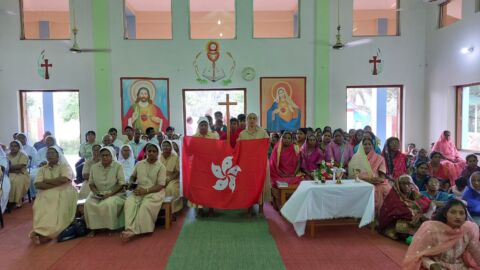Atalaia do Norte: a town of about 15,000 inhabitants in the state of Amazonas, 1,200 km west of Manaus. To get there, a week by boat up the Solimões River; then a 30 km drive to the end of the last Brazilian road; on the other side of the Javari River, Peru. A small village, entirely walkable, but with an immense territory and the largest indigenous land in Brazil, the Javari Valley, home to more than 6,000 indigenous peoples from 26 ethnic groups, including isolated groups.
The Missionary Sisters of the Immaculate began a missionary experience in March with Sr. Laura Cantoni, who belongs to the nearby community of S. Rita do Weill – São Paulo de Olivença (just one or two day’s journey away).
Sr. Laura writes…
What I can share now are only my first impressions, after this three-month experience.
The first thing you encounter is the fusion of peoples and languages: many Peruvians and Colombians with their Castilian, many indigenous people with their different languages. Peruvians come every day from across the river to sell their goods at the fair. It is common to encounter on the streets people in traditional dress and with traditional tattoos. Nevertheless, each group follows its own traditions and internal relationships; coexistence in space is not unity.
Another distinguishing feature is housing by social class: the relatively well-off live in the centre and higher elevations in brick houses, the lower social classes in wooden houses, and indigenous people live in low-lying flood-prone areas and on the outskirts. Brazilians, descendants of families expelled in 2001 from the lands that became TI (Indigenous Land) with the demarcation, live in stilt houses in the Pontes and Portelinha neighbourhoods.

The feeling of being “at the end of the road” is strong and constant. Goods are extremely expensive. Journeys are long (a week to Manaus and a week to the first villages inside the Indigenous Land!). Power cuts are almost daily, running water runs a few hours a week and reaches less than half the homes in Atalaia. There is no sewer system or drainage, no waste treatment, no supervisory body, no teachers in the schools, no doctors in the small hospital, no library, no supermarket, no cinema, no factory… The municipality is one of the worst in Brazil on the Human Development Index. A border area with Peru and Colombia, through which 70% of the cocaine and illicit weapons enter Brazil, violence is widespread, and chemical addictions are endemic, especially among young people.
Entire families are coming to Atalaia from the Indigenous Lands seeking education for their children, because they see it as the path to a better future. However, they face difficulties here, as there is no paid work and they live on public subsidies and sharing with the villages. I visited a house the other day where three Marubo families live, each with 15 people (eight children), supported only by a minimal pension. This is normal in these parts…
Many children and adolescents, particularly children of indigenous and Peruvian parents, fail to complete secondary school due to poor performance in the first grades of elementary school. Many drop out early: adolescents end up becoming mothers early, while young men survive with odd jobs or illegal activities.
Religious differences (IBGE 2024) exist side by side: Catholics are relatively few (25%), virtually the same as Evangelicals (24%), many indigenous people follow their traditions (19%), and a large number declare themselves “without any religion” (26%).
It truly feels like being on the human and spiritual periphery!
Faced with this challenging landscape, my current priority is to get to know the people and their situations, to visit frequently, to greet, to stop and listen, to engage in dialogue with people of other faiths, to inspire the small Catholic community in the joy of the Gospel and in going beyond itself. The icon that accompanies me is that of a Samaritan Church: to be close to those we encounter on the journey, to take the first step toward others, to care for their needs, to share in co-responsibility.
It truly feels like being on the human and spiritual periphery!
Faced with this challenging landscape, my current priority is to get to know the people and their situations, to visit frequently, to greet, to stop and listen, to engage in dialogue with people of other faiths, to inspire the small Catholic community in the joy of the Gospel and in going beyond itself. The icon that accompanies me is that of a Samaritan Church: to be close to those we encounter on the journey, to take the first step toward others, to care for their needs, to share in co-responsibility.
Sr. Laura Cantoni, North Brazil
















